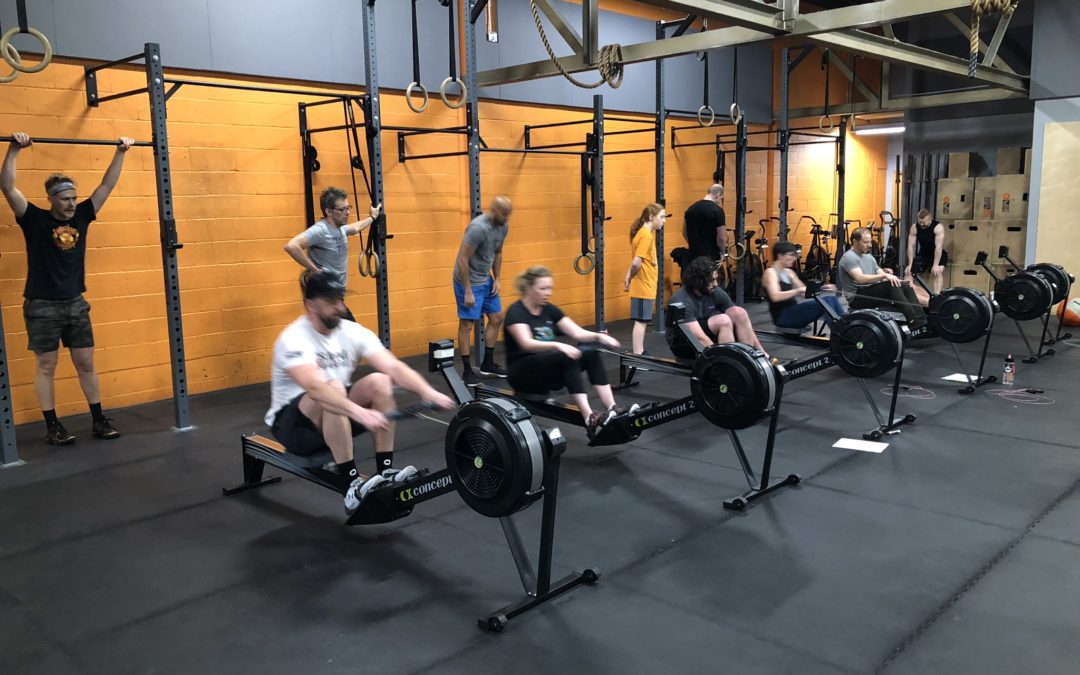Whether you love or hate the rower (ergometer), you’re used to seeing it in workouts. You know how to switch the screen from the calorie setting to meters, but what’s actually the difference? Should your strategy in workouts change based on this setting?
This is something I didn’t really understand until the CrossFit Journal published a recent article about just that, in which they interviewed Peter Dreissigacker, the founder of Concept2 (the company who makes our rowers). If you’d like to check it out for yourself, you can find the link below. If you want the short answer and a quick summary, keep on reading.
Check out The CrossFit Journal article.
The short answer:
Calories – You get rewarded more for extra effort. A lot more effort produces a lot more calories.
Meters – You get rewarded less for extra effort. It takes a lot of effort to go just a little bit faster.
The quick summary:
Why is that the case? From the article, “Concept2’s ergometer monitor has a built-in algorithm that was designed to mimic the fluid resistance of a rowing shell going through water, Dreissigacker explained. This means a monitor on the meters setting—as opposed to the calories setting— forces a rower to work really, really hard to increase his or her speed, he said.”
It boils down to the computer replicating the force of drag on the meters setting, but not doing so on the calories setting. That’s pretty neat!
This can be a fun strategic idea to play with. If a workout has a few 500 meter rows, you might be better off rowing at a comfortable pace and saving your all out effort for other movements in the workout.
If the workout instead has a few 30 calorie rows, it might make sense to push a little harder in that section knowing you get a bigger payoff for your effort. Give it a shot the next few times rowing pops up and let me know if you notice a difference (or if you don’t — I want to hear it all!).

